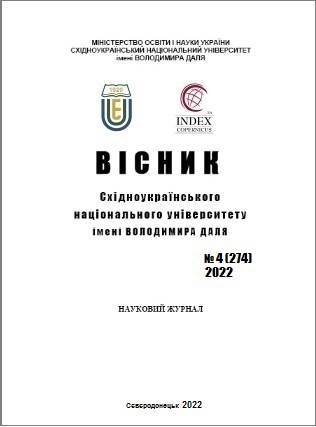Strategic positioning of the company on the international market
DOI:
https://doi.org/10.33216/1998-7927-2022-274-4-5-9Keywords:
strategy, positioning strategy, strategic positioning, foreign market, international marketsAbstract
The presented work examines the peculiarities of the strategic positioning of enterprises aiming to enter foreign markets.
Based on the generalized provisions of the concepts of strategic positioning and the defined essence of the strategic position, it is possible to conclude on the expediency of taking into account the position reflected in the relationship with the main groups of participants in the external environment of the enterprise: competitors; consumers or customers; suppliers; investors, creditors, partners; state
There are three main ways for a company to enter international markets: export, direct investment, and joint venture. The company itself chooses a more profitable way to enter the international market, thereby evaluating its strengths and weaknesses and predicting possible profits and losses. For this, the company uses the criteria by which it evaluates the consumer niche, industry, and competing companies.
After the analysis of international markets, for a modern enterprise in the conditions of fierce competition, it is necessary to develop an international strategy for the sale of products.
Building a sales channel on the international market consists of six stages, after passing which the company will be able to achieve significant success in the direction of foreign economic activity. By determining the responsibilities of the partners, the majority of responsibility can be retained by the manufacturer, transferred to intermediaries, end users, specialized intermediaries (consultant, advertising agency, transport company) or even shared among the channel participants.
Development of local production and export of products to other countries is an appropriate strategy for the further increase of sales on the world market. This reduces the risk and the need for financial resources, and also allows to minimize direct investments in foreign companies. In this case, this strategy is the least expensive and optimal under the given conditions, level of quality and production. If you consider other strategies as possible alternatives, then you should pay attention to the multinational strategy, which helps the company to enter new markets, while making the necessary changes in products for each individual consumer country.
References
1. Aaker D. Strategic management / D. Aaker; trans. with English edited by S.G. Bozhuk -St. Petersburg: Peter, 2007. -496p.
2. Aleksunin V.A. International marketing. - 3rd ed. - M.: Dashkov and K., 2005. - 716 p.
3. Hrebelnyk O.P. Basics of foreign economic activity / O.P. Hrebelnyk - Kyiv, Nauka, 2019. - 197 p.
4. Kotler F. Fundamentals of marketing: Translated. with English / E.M. Penkova – Novosibirsk: Nauka, 2009. – 736 p.
5. Kosharna P. S. Formation of the strategic toolkit of enterprise positioning: diss. Ph.D. ec. Sciences: 08.00.04 / Kosharna Polina Serhiivna – Kharkiv, 2015. – 225 p.
6. Ansoff matrix [Electronic resource]. Access mode: http://marketopedia.ru/97-matrica-ansoffa.html.
7. Ptashchenko O.V., Bozhkova V.V., Sager L.Yu., Sygina L.O. Transformations of marketing communication tools in conditions of globalization. Marketing and innovation management. 2018. No. 1. P. 73–82
8. Ptashchenko O. V. Use of marketing tools and benchmarking on the international market of high-tech products. Bulletin of the Khmelnytskyi National University. 2017. No. 6. Vol. 3 (253). P. 179–183
9. Reznikova N.V. Polarization and unevenness of economic development as a dominant feature of the modern stage of globalization / N.V. Reznikova, O.A. Ivashchenko // Investments: practice and experience. 2016. – No. 4 (February). - P.7-12.
10. Spivakovska T.V. Formation of marketing strategies of machine-building enterprises in the conditions of internationalization of markets / T.V. Spivakovska - K.: NTUU "KPI", 2009. - 13 p.
11. Forbes Global 2000 rankings, The World's Biggest Public Companies. Accessed on May 31, 2019
12. Helm, R. Internationale Markteintrittsstrategien: Einflussfaktoren auf die Wahl der optimalen Form des Markteintritts in Exportmärkte / R. Helm. – Lohmar; Köln: Eul, 1997.

